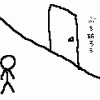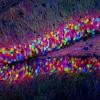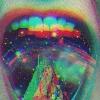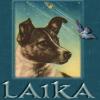Preventing Suicide by Increasing BDNF
Ongoing research in neuroscience is demonstrating that meaning in life is deeply connected to the condition of the brain. Whether people judge their lives as meaningful or not is determined by neurotransmitters and brain activity in response to genetic and environmental influences. This indicates that a sense of meaning in life is associated with certain biological states. Finding the right biological influences could help a person feel like his or her life is meaningful and valuable.
Multiple studies show that hopelessness is associated with suicidal behavior (Link 1, Link 2, Link 3, Link 4, Link 5, Link 6) and this is barely the tip of the research on hopelessness and suicide, although a recent study indicates insomnia may be an even stronger predictor of suicidal behavior (Link). Psychology and psychiatry have devoted great effort to predicting human behavior in a variety of areas. Developing better ways to predict and prevent suicide is an important mission.
Some of the most fascinating and useful lessons on preventing and treating depression come from postmortem studies of suicide victims. A study that conducted brain autopsies on people who committed suicide and compared their brains to a control group discovered some interesting findings. The study found reduced messenger RNA levels of BDNF and trk B in the prefrontal cortex and hippocampus in the brains of people who committed suicide. Another study replicated the reduced BDNF in the hippocampus and prefrontal cortex of suicide victims. Multiple studies (Link 1, Link 2, Link 3, Link 4, Link 5) show that low levels of BDNF are found in patients with depression, anxiety, and/or bipolar disorder.
Since these results were first published, elevating BDNF levels in certain parts of the brain has become a promising area of research. Vigorous exercise improves mood in depressed patients and is recommended in many books and articles about natural treatments for depression. In fact, a study shows that intense exercise raises BDNF levels. Exercise also helps normalize BDNF in patients with panic disorder (Link). Some other studies show the involvement of BDNF in treating depression. Some of these studies involve animal models of depression, but they are still useful for identifying therapies that raise BDNF and could potentially be tested in humans.
Medications:
1. Ketamine use, which has rapid antidepressant properties, is associated with elevated levels of BDNF. (Link)
2. Memantine, which has antidepressant properties, elevates levels of BDNF. (Link)
3. Agomelatine increases hippocampal BDNF and has antidepressant properties. (Link)
4. Riluzole restores hippocampal BDNF expression and has antidepressant properties. (Link)
5. Escitalopram is an antidepressant that reverses BDNF deficits. (Link)
6. Atypical antipsychotics increase BDNF levels and have antidepressant effects. (Link)
7. Venlafaxine is an antidepressant that increases BDNF levels. (Link)
8. Olanzapine increases BDNF levels and augments antidepressant treatment. (Link)
9. Lithium upregulates BDNF and treats bipolar disorder. (Link)
10. Sertraline is an antidepressant that increases BDNF. (Link)
11. Risperidone increases BDNF levels and augments antidepressant treatment. (Link)
12. Imipramine is an antidepressant that up-regulates BDNF expression. (Link)
13. Mirtazapine is an antidepressant that increases BDNF gene expression. (Link)
14. Metyrapone enhances BDNF gene expression and has antidepressant properties. (Link)
15. Rolipram normalizes BDNF levels and has antidepressant properties. (Link)
Other Psychiatric Treatments:
1. Repetitive transcranial magnetic stimulation increases BDNF levels and has antidepressant effects. (Link)
2. Electroconvulsive therapy elevates BDNF levels and has antidepressant effects. (Link)
3. Vagal nerve stimulation activates BDNF receptors and treats depression. (Link)
Food and Lifestyle:
1. A Mediterranean diet increases BDNF levels in depressed patients. (Link)
2. Green odor elevates BDNF and has antidepressant properties. (Link)
3. Music enhances BDNF levels and improves mood. (Link)
4. Alpha-linolenic acid increases BDNF and reduces depressive behavior. (Link)
Supplements:
1. Fish oil has antidepressant effects that involve BDNF. (Link)
2. Ginsenoside prevents a stress-induced reduction in BDNF levels. (Link)
3. Hyperoside has antidepressant properties and elevates BDNF expression. (Link)
4. Magnolol restores BDNF expression and has antidepressant effects. (Link)
5. Curcumin reverses a decrease in BDNF levels and produces an antidepressant effect. (Link)
6. Zinc increases the BDNF mRNA level and has antidepressant effects. (Link)
7. Beta-alanine increases BDNF concentration and has anti-anxiety properties. (Link)
8. Flavonols enhance BDNF expression and have antidepressant properties. (Link)
9. Suyu-Jiaonang attenuates a reduction in BDNF and has antidepressant properties. (Link)
10. Ferulic acid increases BDNF mRNA and ameliorates stress-induced depressive behavior. (Link)
11. Nicotine increases BDNF levels and has antidepressant properties. (Link)
12. Polygala tenuifolia increases BDNF expression and has antidepressant effects. (Link)
13. Xiaoyaosan reverses decreases in BDNF and has antidepressant effects. (Link)
14. Piperine reverses the reduction in BDNF and has antidepressant properties. (Link)
15. Danzhi Xiaoyao powder increases BDNF levels and reduces depressive symptoms. (Link)
16. Ginkgo biloba extract increases BDNF expression and reduces the effects of stress. (Link)
17. Eugenol has antidepressant activity and induces BDNF. (Link)
Happiness and meaning in life are inseparable from biological traits. Understanding this fact opens up fascinating areas of research in preventing suicide. This is not the last word in suicide prevention. The next two posts will explore more research into neurological and genetic causes of suicide.
http://samsnyder.com...ncreasing-bdnf/




















































